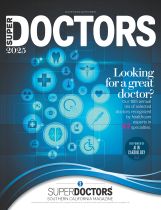The National Institutes of Health
From NIH Research Matters (NIH)
March 5, 2012
Some bacteria, such as those that cause cholera, use a special system to inject toxins into the cells of host organisms and other bacteria. A new study has revealed how this syringe-like injection system works at a molecular level.
Bacterial cells are enclosed in 2 membranes. These membranes keep the bacteria's contents inside and foreign molecules out. So far, researchers have found that there are at least 6 different ways that bacteria can transport proteins (like toxins) through the 2 membranes and into neighboring cells.
Type VI secretion, the most recent type of transport to be discovered, is common to many types of bacteria, including Vibrio cholerae, a waterborne pathogen that infects millions worldwide and causes cholera. As many as 20 different proteins make up the type VI transport machinery, but how these proteins work together to send proteins and toxins out of the bacterial cell has, until now, remained a mystery.
A team of scientists led by Dr. Grant Jensen of the California Institute of Technology and Dr. John Mekalanos of Harvard Medical School set out to discover the structure of the type VI secretion machine, and to illuminate its mechanism of action. Their study, funded by NIH's National Institute of Allergy and Infectious Diseases (NIAID) and National Institute of General Medical Sciences (NIGMS), was published in the online edition of Nature on February 26, 2012.
The machinery of the type VI secretion system is small. At around 12-15 nanometers in diameter, these structures are best seen by electron microscopy, a technique that uses electrons to view images smaller than the wavelength of visible light. The researchers used electron cryotomography, where samples are deep-frozen before being scanned, to recreate a 3-dimensional image of Vibrio cholerae cells.
Inside the frozen cells, they found long, thin, straight tubes and half-length, fatter tubes. The tubes were attached to the cell membranes by a base structure and projected into the bacterial cell. These tubes, the scientists hypothesized, were the type VI secretion machine frozen into each of its 2 conformations. Further experiments proved they were correct.
To see if they could observe the transition between the 2 tube structures in living cells, the researchers turned to the light microscope. They added a fluorescent tag to one of the tube structure proteins. These tagged proteins were then incorporated into the tubes in living cells. Using a time-lapse camera, the scientists watched as long, thin, fluorescent tubes formed inside cells over periods of a few seconds. After an unknown signal, the tubes quickly (in about 5 milliseconds) collapsed into the short form. Within 30-60 seconds after that, the short tubes disassembled, and the long tubes reformed.
"As a field we only know of only a couple of machines that have visible dynamic behavior inside bacterial cells, so I was quite shocked to see this small nanomachine in action so clearly," Mekalanos says. Although they couldn't see the inside of the syringe-like structure, the scientists think that secreted proteins are shot out of the hollow tube and into target cells as it collapses into the short form.
"People aren't surprised that animals have really interesting ways to hurt each other-snakes have venom, bears have claws," Jensen says. "But they might be surprised that a single cell within one of those animals' bodies is still 100 times larger than the bacterial cells we're talking about, and yet the bacterial cells contain weapons that are so sophisticated. That's the marvel."
- by Lesley Earl, Ph.D.

